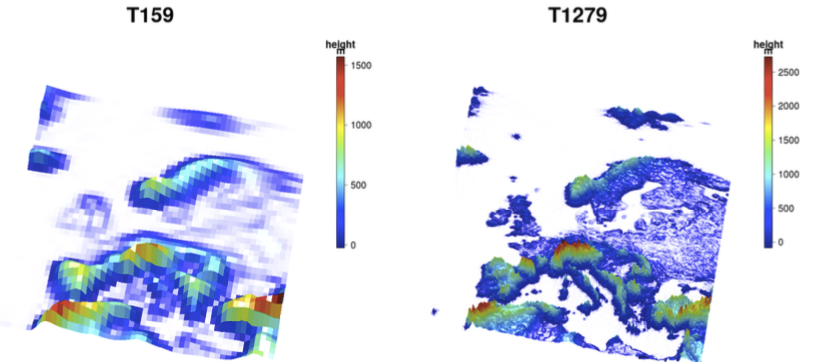You are here
The Climate SPHINX PRACE project
 Climate prediction is currently one of the most computationally challenging problems in science and yet also one of the most urgent problems for the future of society. It is well known that a typical climate model (with a resolution of ~120-km in the atmosphere and ~100-km in the ocean) is unable to represent many important climate features, in particular the Euro-Atlantic weather regimes.
Climate prediction is currently one of the most computationally challenging problems in science and yet also one of the most urgent problems for the future of society. It is well known that a typical climate model (with a resolution of ~120-km in the atmosphere and ~100-km in the ocean) is unable to represent many important climate features, in particular the Euro-Atlantic weather regimes.
Recent studies have been shown that climate models at much higher resolutions (~16km) simulate these patterns more realistically. Whilst few would doubt the desirability of being able to integrate climate models at such a high resolution, there are numerous other areas of climate model development which compete for the given computing resources: for example, the need to incorporate additional Earth System complexity. Instead of explicitly resolving small scale processes by increasing the resolution of climate models, a computationally cheaper alternative is to use stochastic parameterization schemes.
The main motivation for including stochastic approaches in climate models is related with the observed upscale propagation of errors, whereby errors at very small scales (only resolved in high horizontal esolution models) can grow and ultimately contaminate the accuracy of larger scales in a finite time. A stochastic scheme includes a statistical representation of the small scales, so is able to represent this process. There is mounting evidence that stochastic parameterizations prove beneficial for climate simulations. These results highlight the importance of small-scale processes on large-scale climate variability, and indicate that although simulating variability at small scales is a necessity, it may not be necessary to represent the small-scales accurately, or even explicitly, in order to improve the simulation of large-scale climate. Climate SPHINX aims to investigate the sensitivity of climate simulations to model resolution and stochastic parameterisations, and to determine if very high resolution is truly necessary to facilitate the simulation of the main features of climate variability.
The EC-Earth Earth-System model will be used to explore the impact of Stochastic Physics in long centennial climate integrations as a function both of model resolution (from 120km to 16km for the atmosphere) and in coupled and uncoupled configurations. The experiments include historical and scenario projection following CMIP5 specifications. By comparing high and low resolutions integrations we will estimate the impact of the increased resolution on climate simulation. By comparing experiments with and without the implementation of stochastic physics we will estimate the impact of stochastic physics. By comparing experiments with stochastic physics with experiments carried out without stochastic physics, but at higher resolutions, we will assess to what extent the stochastic representation of the sub-grid processes can compare with the explicit representation of them. This project will provide a significant progress towards reliable climate predictions, exploring the respective role of numerical resolution and stochastic parameterisations in improving climate simulation quality. Indeed, to our knowledge, this will be the first time that the impact of resolution and stochastic parameterisations is investigated extensively and systematically for climate simulations.









